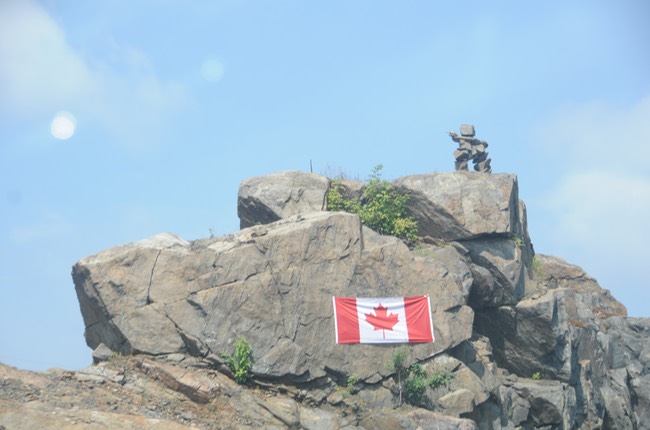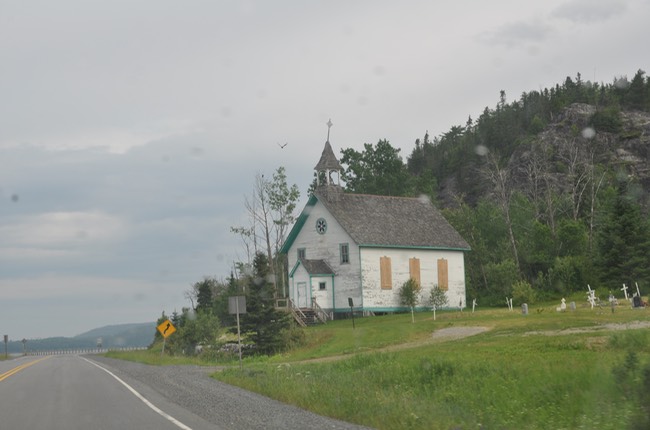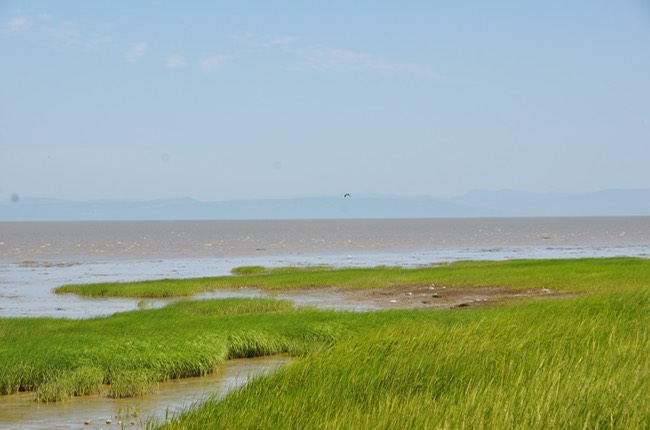
Born and raised on the west coast of Canada, I have lived my whole life on the periphery of a very large country. Last summer, my family made good on a long standing promise, and took a four-week drive from west to east and back again. During that trip, we arrived at a new appreciation of the scope and scale of our country. Our twelve-year-old son discovered the zen of being on the road, watching the miles slide by as we moved from one region to another. We came to better understand the culture and geography of the different parts of the country, and found beauty in all of them.
There were many surprises along the way.
We were fascinated by highway signage that told us the destination of the watersheds through which we were travelling, which shifted between the Pacific, Atlantic, and Arctic oceans. We learned that not far east of Winnipeg, Manitoba, we had reached the longitudinal centre of our country. We learned that what is called “northern Ontario” is not much further north than Vancouver, but culturally is a world apart. Road travel does not continue into the arctic the way it does in the west, and there is a sense of remoteness that begins much further south than one finds in British Columbia or the prairies.

Another surprise was the extent to which Canada east of the prairies is bilingual. Not just Quebec, but northern Ontario and eastern Manitoba, all had bilingual signage; French accents regularly made an appearance in these areas. In Winnipeg, we found signs in three languages: English, French, and Cree.
I was completely unprepared for the wave of excitement that swept me as we drove into downtown Ottawa and saw Parliament Hill rising up before us. This iconic view, so familiar from newspaper photos and television broadcasts, thrilled me as I saw it for the first time. In Quebec City, we enjoyed the famous European charm of the historic quarter, and admired the view of the St. Lawrence River from the Plains of Abraham. Only a little further east, we were blown away by the sheer size of the river. It looked more like a massive lake, and this was before its waters flowed into the Gulf of St. Lawrence. It truly is one of the great rivers of the world.

In the maritime provinces, we enjoyed coastal scenery that matched all our expectations for charming Atlantic fishing villages and rocky shorelines. We also discovered in New Brunswick a forest wilderness as lovely as anything we saw in Ontario or British Columbia. We were unsurprised by the world’s largest lobster sculpture in Shediac; we had not expected the French Fry Capital of the World in the small town of Florenceville-Bristol, birthplace of the McCain frozen food empire.
Mostly, we discovered that Canada’s size precludes almost any generalizations about the place and its people. It makes a mockery of all the conventional attempts to catalogue and categorize the different regions. I wish that all Canadians could make the trip that we made, and see for themselves the awesome variety of landscapes, towns and cities, and people that we encountered. It gives a whole new meaning to the phrase “We are Canadian”.
Photos: Patriotic display near Parry Sound, Ontario; Hwy. 11 north of Thunder Bay; Saint Lawrence River, northeast of Quebec City